Abstract
The hypothesis that manual work and exposure to vibration are antecedents to the development of osteoarthrosis was assessed employing a cross sectional study design. The frequency of osteoarthrosis in the acromioclavicular joint was studied in three groups of workers in the construction industry. Two groups were manual workers (54 bricklayers and 55 rock blasters); the third group consisted of 98 foremen. The radiographic appearance of the right and left acromioclavicular joints was classified into one of five grades of osteoarthrosis. A protocol was developed to assess exposure on the basis of job title, years of manual work, total weight lifted during working life, and total hours of exposure to vibrating tools. Odds ratios for job titles (manual worker v foreman) and for years of manual work as indicators of exposure were of similar magnitude of around 2.5. Construction workers who had lifted more than 709 tonnes had an increased risk of developing severe osteoarthrosis of the right acromioclavicular joint, odds ratio: 2.62 (95% confidence interval (95% CI), 1.13-6.06). The odds ratio for the left side was 7.67 (95% CI, 2.76-21.34). In the analysis of vibration exposure, workers who had been highly exposed to vibration had an odds ratio of 1.99 (95% CI, 1.00-3.92) on the right side and 2.20 (95% CI, 1.07-4.56) on the left. This effect almost disappeared after simultaneous adjustment for manual work. Occupational and ergonomic factors, such as the sum of lifted tonnes during working life, job title, and the sum of years of manual work seem to be risk factors for osteoarthrosis of the acromioclavicular joint, whereas vibration alone was a weaker risk factor.
Full text
PDF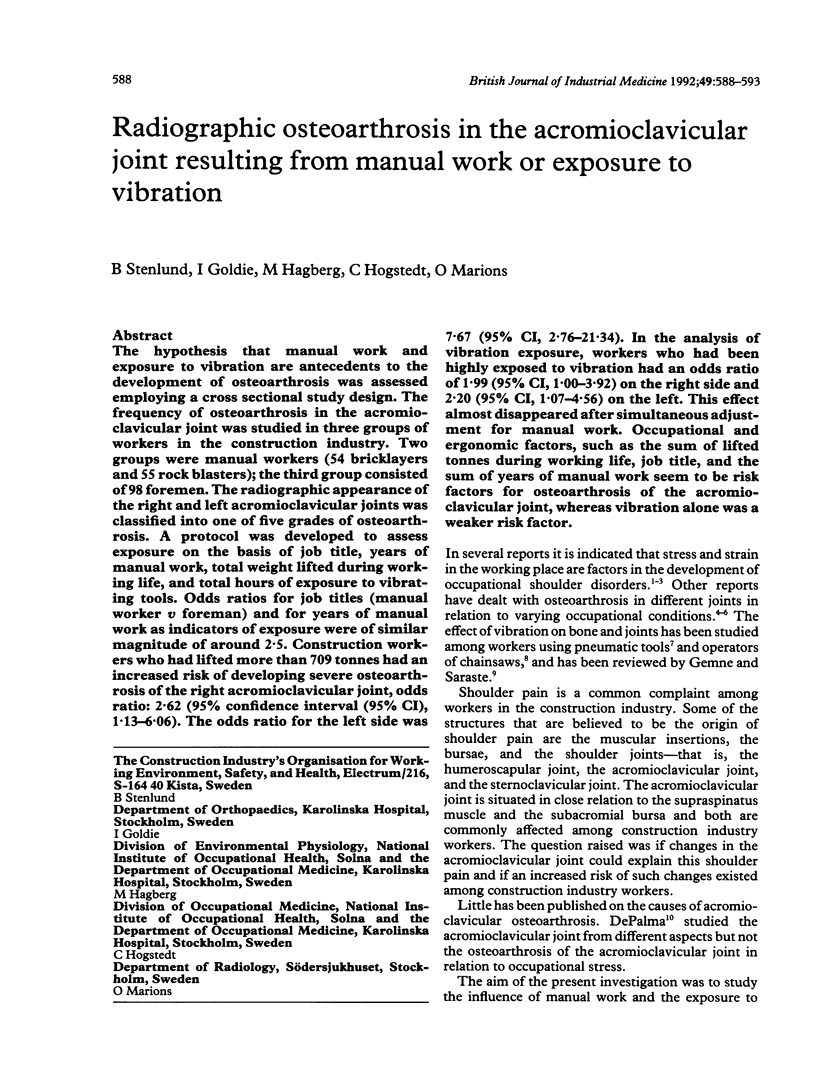
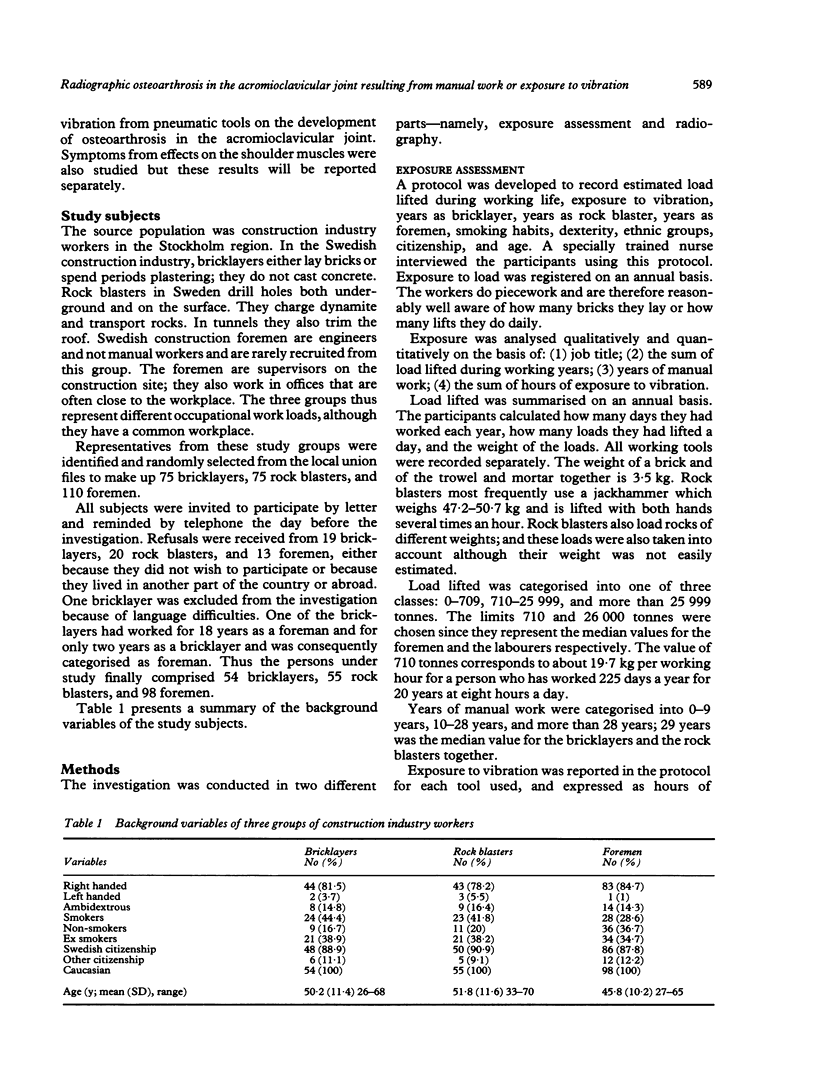

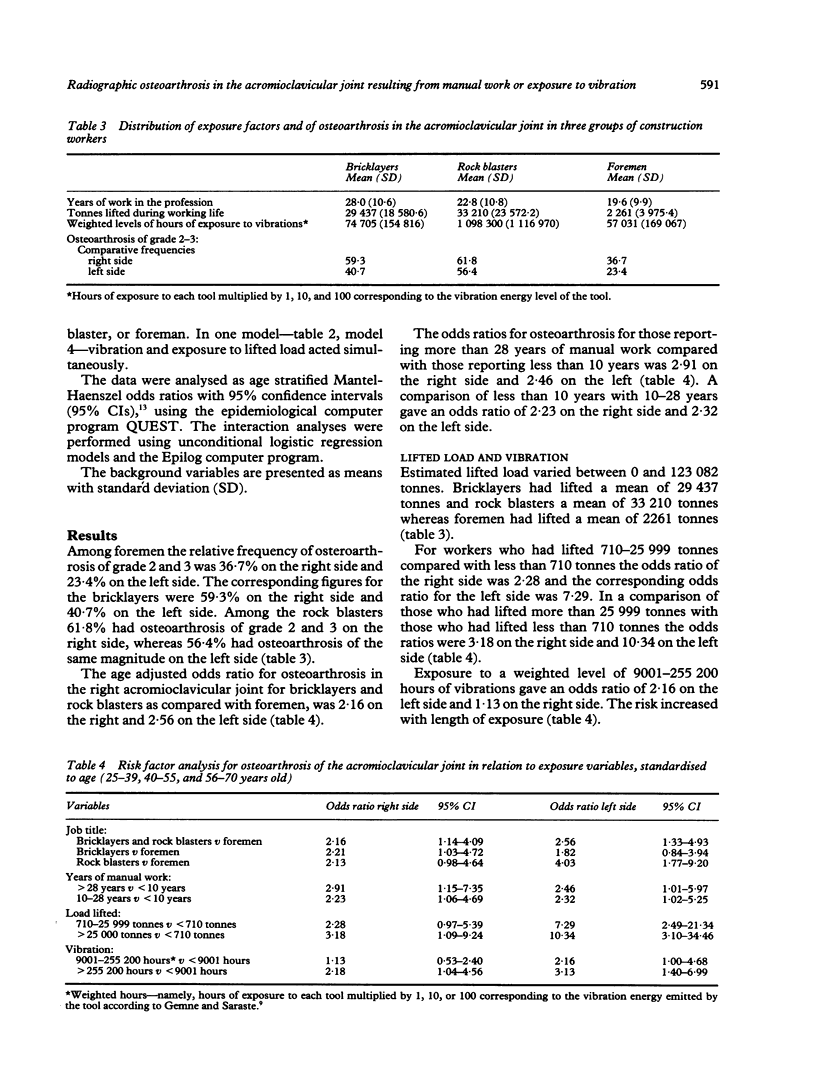
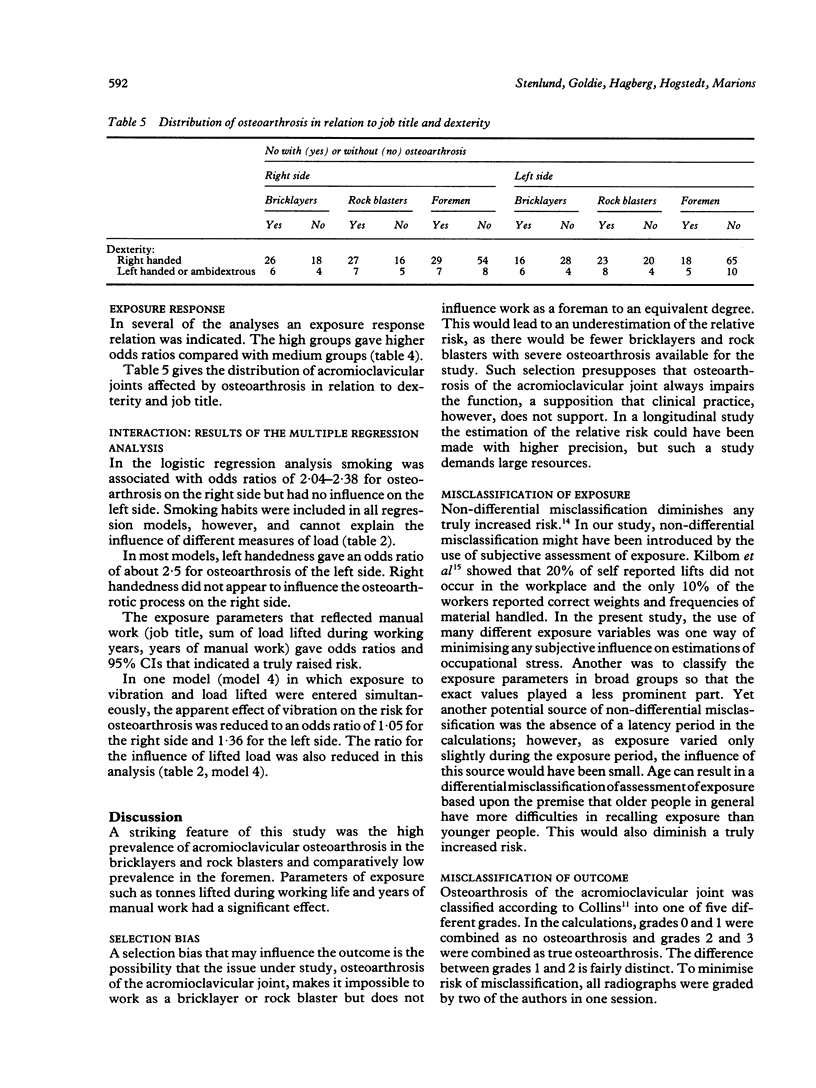
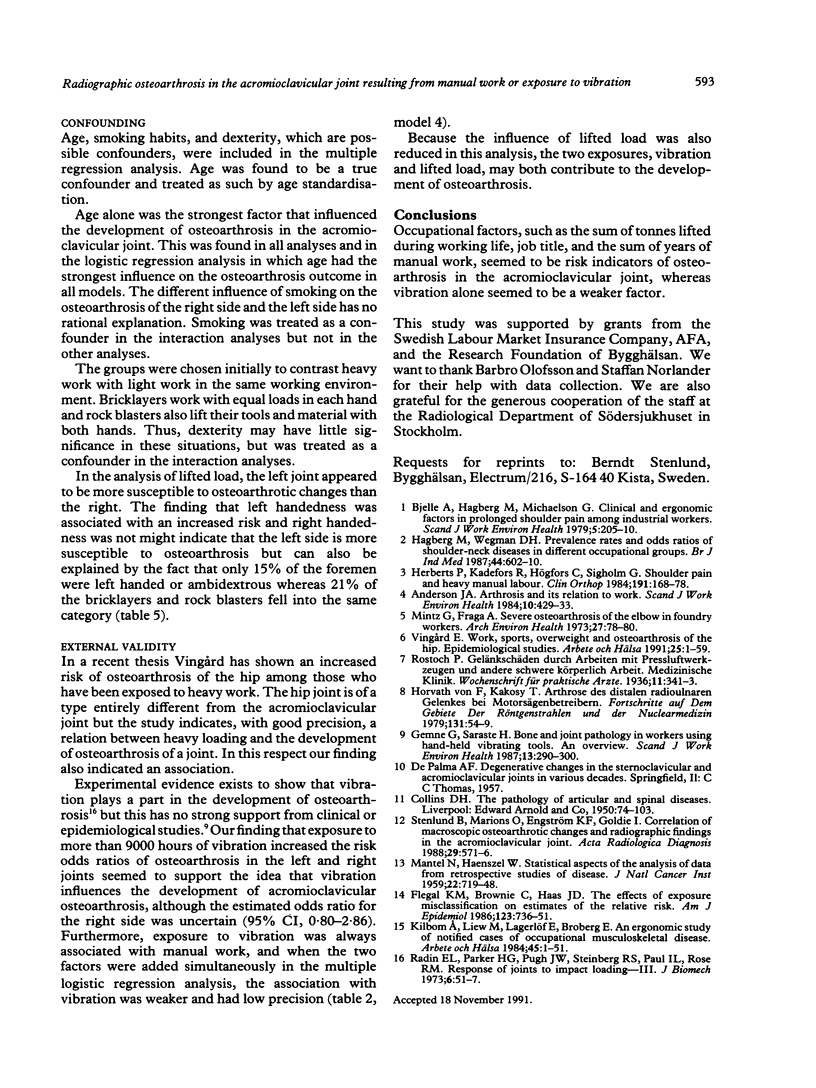
Selected References
These references are in PubMed. This may not be the complete list of references from this article.
- Anderson J. A. Arthrosis and its relation to work. Scand J Work Environ Health. 1984 Dec;10(6 Spec No):429–433. doi: 10.5271/sjweh.2301. [DOI] [PubMed] [Google Scholar]
- Flegal K. M., Brownie C., Haas J. D. The effects of exposure misclassification on estimates of relative risk. Am J Epidemiol. 1986 Apr;123(4):736–751. doi: 10.1093/oxfordjournals.aje.a114294. [DOI] [PubMed] [Google Scholar]
- Gemne G., Saraste H. Bone and joint pathology in workers using hand-held vibrating tools. An overview. Scand J Work Environ Health. 1987 Aug;13(4):290–300. doi: 10.5271/sjweh.2048. [DOI] [PubMed] [Google Scholar]
- Hagberg M., Wegman D. H. Prevalence rates and odds ratios of shoulder-neck diseases in different occupational groups. Br J Ind Med. 1987 Sep;44(9):602–610. doi: 10.1136/oem.44.9.602. [DOI] [PMC free article] [PubMed] [Google Scholar]
- MANTEL N., HAENSZEL W. Statistical aspects of the analysis of data from retrospective studies of disease. J Natl Cancer Inst. 1959 Apr;22(4):719–748. [PubMed] [Google Scholar]
- Mintz G., Fraga A. Severe osteoarthritis of the elbow in foundry workers. Arch Environ Health. 1973 Aug;27(2):78–80. doi: 10.1080/00039896.1973.10666322. [DOI] [PubMed] [Google Scholar]
- Radin E. L., Parker H. G., Pugh J. W., Steinberg R. S., Paul I. L., Rose R. M. Response of joints to impact loading. 3. Relationship between trabecular microfractures and cartilage degeneration. J Biomech. 1973 Jan;6(1):51–57. doi: 10.1016/0021-9290(73)90037-7. [DOI] [PubMed] [Google Scholar]
- Stenlund B., Marions O., Engström K. F., Goldie I. Correlation of macroscopic osteoarthrotic changes and radiographic findings in the acromioclavicular joint. Acta Radiol. 1988 Sep-Oct;29(5):571–576. [PubMed] [Google Scholar]


